Previous Blogs in this Series
Introduction
With contrasting feelings of sadness and satisfaction we shuttled away from the scenic and sensitive Darién following an amazing week at Canopy Camp. After saying goodbye to our new friends Liz and Brett, we again overnighted at the Riande Hotel near Tocumen Airport in Panamá.
We booked an extension at Canopy Lodge which is in Coclé Province near the town of El Valle de Antón. This location was the original Canopy Family business location and is the permanent home of the founder, Raul Arias de Para.
El Valle de Antón
The El Valle area is geologically interesting. The town is located within the crater of an extinct volcano. Looking at the terrain map of the area will clearly show this. The last believed activity was about 13000 years ago and the last major eruption is believed to have occurred about 35000 years ago. This major eruption produced a pyroclastic flow which reached the Pacific Ocean about 25 km away.
The town of El Valle is and has been for many years a location for foreign and domestic travelers to stop and enjoy. It is also a favored second home location for the more affluent members of Panamanian society. One area of town is known as millionaires’ row. The homes are quite impressive, and we observed several new ones under construction.
There are vistas where the 200 to 300-meter crater walls reveal their impressive and unmistakable form.

The floor of the crater is about 600 meters above sea level. Much of the birding is being done at 700-800 meters. These elevations bring on a whole new set of birds to indulge my hobby (obsession).
Canopy Lodge
When we boarded our shuttle van at the Riande to make the 3-hour drive, we quickly learned that most of our stay at the Canopy Lodge would effectively be a private tour. No other guests! Amazing. There would be some ladies joining us on the afternoon of our last full day.
The accommodation at the Canopy Lodge was wildly different than in the Darién. The facility has more of a resort hotel vibe compared to the eco-lodge vibe of the Darién property. While there is no swimming pool, a lovely babbling stream running through the property has been enhanced with a nice swimming area complete with a swinging rope and a treehouse. Clearly, this was a wonderful playground for Raul’s children growing up. The treehouse is complete with childhood mementos still sitting undisturbed after 20+ years.
Let's Get to the Birds
For starters the property has some feeders set up. In fact, Cornell Labs has a feeder cam on property aimed at a fruit feeder and a hummingbird feeder, 24/7. While writing this blog post, I opened YouTube and watched just to bring back some memories. Oh man, a snowy-bellied hummingbird just came to the feeder! How exciting, I wish I was there.
Upon arriving and getting checked in we were given two great experiences. First there were several Spot-crowned Barbets cooperatively excavating a dead tree for a homesite. Second there are one or two White-tipped Sicklebills regularly partaking in the heliconia nectar on a very large plant on the lodge grounds. A great start!
for the the Cornell Labs Feeder Cam at Canopy Lodge.
A Little More Info on These Interesting Birds
The White-tipped Sicklebill (very appropriately named) is the only hummingbird that frequently lands to feed. Presumably, this is to better manipulate the long, curved bill deep into the heliconia flower. The bird lives from 300 to 1000 meters and ranges from Costa Rica to Ecuador. Its feeding behavior is what is known as trap-lining. The nature of having an established feeding route over a lengthy distance, more than 1 km for some individuals. Its conservation status is Least Concern.
Spot-crowned Barbets inhabit the mid to upper levels of primary forest and are frequently seen in small groups. Almost nothing is known about the breeding habits of these birds; however, through field observations, including my own on this trip, there seems to be cooperation among these small groups when it comes to excavating a nest. My observation of 5 birds (sex unknown) revealed that they took turns going in and hammering out the hole in the dead tree. Each bird did about 5 minutes before being relieved by the next bird in the queue. It was very fascinating to watch and not a regular occurrence at the lodge.
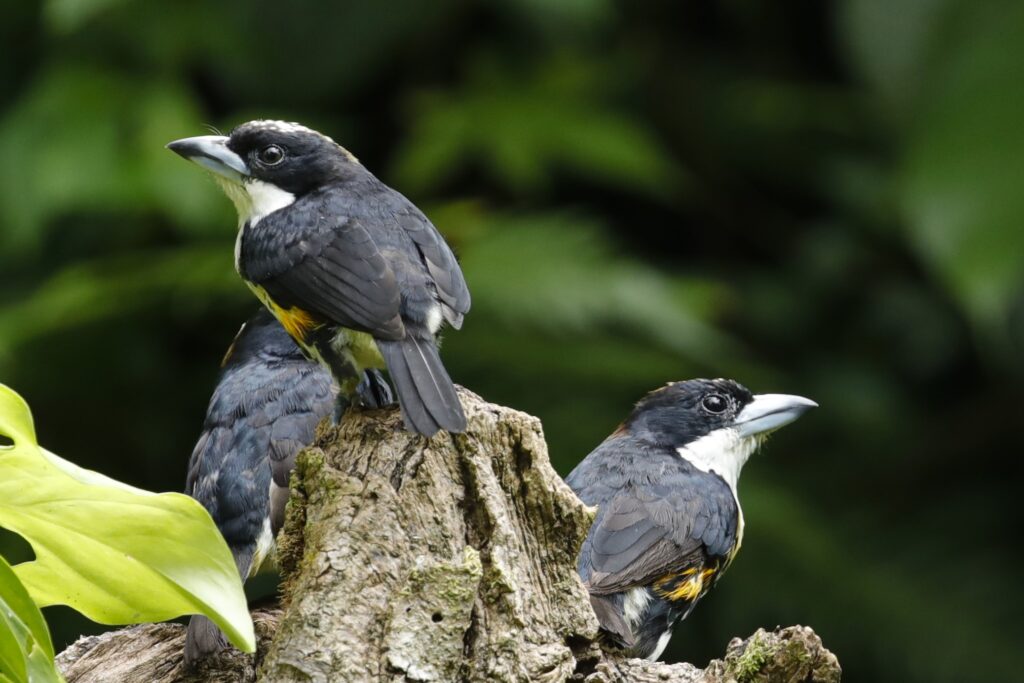

Birding Around Canopy Lodge
After lunch, we met our guide for the afternoon. Our first venture was around the grounds and up the road a couple hundred meters and back.
I was excited to see the Orange-billed Sparrows skulking about the undergrowth as described by Liz who was here before going to the Darién. I am a little partial to members of the sparrow family because I think they are not as loved amongst birders as other families. Let’s say they are underdogs in the universe of competing attentions. And I love an underdog. I find them a nice birding challenge as some identifications are challenging, but with some study, always identifiable. In Central America not all sparrows are called sparrows: Some are brushfinches and some are called chlorospinguses. I guess that is no different than in the USA, think Towhee and Lark Bunting.
Motmots of El Valle and Canopy Lodge
One striking bird which frequents the fruit feeder is the magnificent Rufous Motmot. A spectacular bird and a lifer for me. Other motmots common in the area are the Lesson’s Motmot, Broadbill Motmot and the cute little Tody Motmot. That makes 4 of the 5 Panama motmots at the Lodge and surrounding area. I had previously seen the Whooping Motmot in the Canal Zone and Darién making it a clean sweep on this family of birds in Panama.
Fun fact on the Motmots: The last publication of Birds of Panama by George Engler, which is the “go to” book for Panama birders does not show Whooping or Lesson’s Motmots. It does show Blue-crowned Motmot. In 2009 Blue-crowned was split into 6 different species including Whooping and Lesson’s which can be found in Panama.
There is Variety at El Valle de Antón and Canopy Lodge
On the first afternoon at the lodge, I spotted 9 new life birds. Notable other lifers were the Violet-headed Hummingbird, Stripe-throated Hermit, Scaly-breasted Wren and Chestnut-capped Warbler. Did I say that I also love seeing the resident warblers not visible in the USA. So far I have seen the Chestnut-capped Warbler and the Buff-rumped Warbler, but there would be more.
The Owls of El Valle de Antón and Canopy Lodge
A good birding guide knows where the owls roost. The guides at the lodge were no exception. In the days we were there we found and photographed Tropical Screech Owl, Mottled Owl and the spectacular Spectacled Owl, momma and juvenile. Very nice and something you would never expect to find on your own.
Three Days at Canopy Lodge and El Valle de Antón
Like the Canopy Camp, the birding took place on a combination of public and private land. Like the Canopy Camp the guides were top notch. We had three different guides (they were all related to each other) all with many years of experience and all very loyal to Raul.
The next two days would see another 33 life birds and would include some wonderful hikes through forest and more open habitat. In total 127 birds were seen in Coclé Province.
On the afternoon of our final day, we met the ladies from Iowa. Mary is a photographer who built her own website, www.mostlybirdsbymary.com. We had lunch with them, went birding in the afternoon then had dinner. We said our goodbyes in the morning, and they went birding and we prepared to leave. If we ever get to eastern Iowa, we will look them up and enjoy a birding day with them.

Wrapping-up Our Organized Birding
So, it came time to wrap-up the heavily planned and invested portion of our border-to-border Panama birding extravaganza. At this point, I am becoming quite familiar with many of the birds and must put that to good use in the coming weeks. We are about to be on our own for the first time on this trip.
Next stop is the Province of Veraguas. Will the Scarlet Macaw make an appearance?




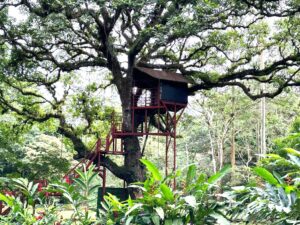
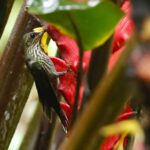
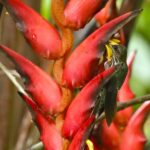

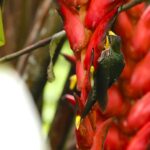




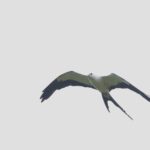

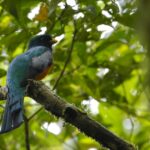
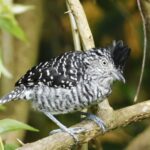

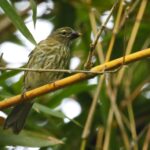

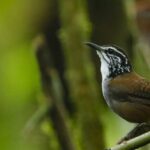
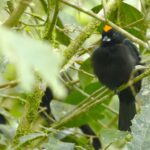
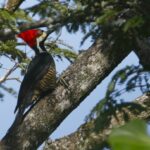

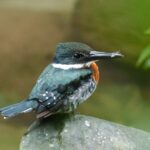
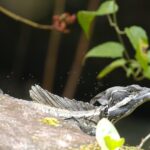
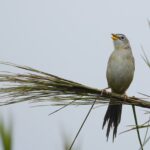
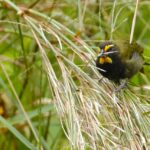
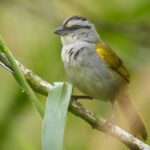
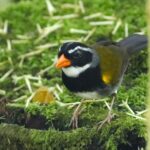
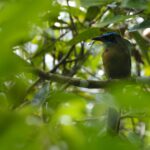
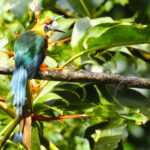
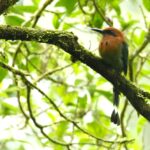
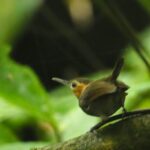


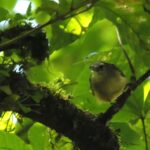
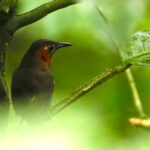

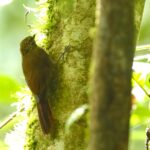

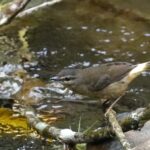

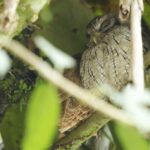
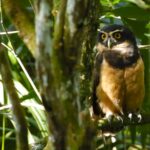
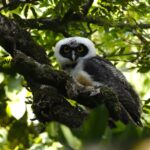

Sounds like such a great time!!